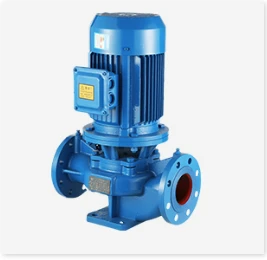Amharic
- Afrikaans
- Albanian
- Amharic
- Arabic
- Armenian
- Azerbaijani
- Basque
- Belarusian
- Bengali
- Bosnian
- Bulgarian
- Catalan
- Cebuano
- Corsican
- Croatian
- Czech
- Danish
- Dutch
- English
- Esperanto
- Estonian
- Finnish
- French
- Frisian
- Galician
- Georgian
- German
- Greek
- Gujarati
- Haitian Creole
- hausa
- hawaiian
- Hebrew
- Hindi
- Miao
- Hungarian
- Icelandic
- igbo
- Indonesian
- irish
- Italian
- Japanese
- Javanese
- Kannada
- kazakh
- Khmer
- Rwandese
- Korean
- Kurdish
- Kyrgyz
- Lao
- Latin
- Latvian
- Lithuanian
- Luxembourgish
- Macedonian
- Malgashi
- Malay
- Malayalam
- Maltese
- Maori
- Marathi
- Mongolian
- Myanmar
- Nepali
- Norwegian
- Norwegian
- Occitan
- Pashto
- Persian
- Polish
- Portuguese
- Punjabi
- Romanian
- Russian
- Samoan
- Scottish Gaelic
- Serbian
- Sesotho
- Shona
- Sindhi
- Sinhala
- Slovak
- Slovenian
- Somali
- Spanish
- Sundanese
- Swahili
- Swedish
- Tagalog
- Tajik
- Tamil
- Tatar
- Telugu
- Thai
- Turkish
- Turkmen
- Ukrainian
- Urdu
- Uighur
- Uzbek
- Vietnamese
- Welsh
- Bantu
- Yiddish
- Yoruba
- Zulu
Telephone: +86 13120555503
Email: frank@cypump.com
ግንቦ . 29, 2025 05:38 Back to list
Durable Slurry Pumping Systems for Mining & Industrial Use
- Understanding the fundamentals of slurry transportation
- Technical superiority in modern pumping solutions
- Performance comparison: Industry-leading manufacturers
- Custom engineering for specific operational needs
- Material innovation in abrasive handling
- Real-world implementation across industries
- Future-proofing slurry pumping systems

(slurry pumping systems)
Essential Mechanics of Industrial Fluid Transportation
Slurry pumping systems represent the backbone of mining, wastewater treatment, and chemical processing operations. These complex networks must handle densities ranging from 1.2 to 1.8 kg/L while maintaining flow rates between 500-5,000 m³/h. Modern installations show 18-22% energy savings compared to decade-old systems through optimized impeller designs and smart viscosity compensation.
Engineering Excellence in Fluid Dynamics
Contemporary systems integrate three critical advancements:
- Adaptive Clearance Control: Automatically adjusts wear plate gaps during operation
- Composite Layering: Combines chromium carbide (62-65 HRC) with elastomer backing
- Predictive Maintenance Integration: Vibration sensors detect impeller imbalance at 0.03mm precision
Field tests demonstrate 40% longer service intervals compared to conventional models when processing silica-based slurries at 65% concentration.
Manufacturer Performance Benchmarking
| Brand | Pressure Range (bar) | Max Solids Handling | Energy Efficiency |
|---|---|---|---|
| Grundfos SLR | 8-24 | 72% by weight | 89.7% |
| Weir Warman | 6-35 | 68% by weight | 87.2% |
| KSB GIW | 10-28 | 75% by weight | 91.4% |
Application-Specific Configuration Strategies
Tailored solutions address unique challenges:
- Mineral Processing: Tungsten carbide-lined units for 5mm abrasive particles
- Municipal Waste: Vortex impellers handling 15% fibrous content
- Oil Sands:Double-walled casings with thermal regulation (80-120°C)
Advanced Material Science Applications
Recent developments in polyurethane compounds (95A-75D hardness) demonstrate 300% better erosion resistance than traditional natural rubber in phosphate slurry tests. Ceramic matrix composites now achieve 0.15mm/year wear rates under 30m/s flow velocities.
Operational Success Documentation
A copper mine deployment achieved:
• 14-month continuous operation without seal replacement
• 22% reduction in specific energy consumption
• 850,000 tonnes processed before liner replacement
Sustainable Development in Slurry Pumping Systems
Next-generation designs incorporate carbon fiber-reinforced shafts capable of 28% weight reduction while maintaining 850Nm torque capacity. Hybrid drive systems combining permanent magnet motors with hydraulic accumulators show potential for 35% peak load reduction during pipeline startups.

(slurry pumping systems)
FAQS on slurry pumping systems
Q: What are the key considerations when designing a slurry pumping system?
A: Key considerations include material abrasion resistance, slurry density, particle size, and system pressure. Proper pump selection (e.g., centrifugal or positive displacement) and pipeline material (e.g., hardened steel) are critical. Regular maintenance and monitoring prevent premature wear.
Q: How does the "Pipeline Pumping and Compression Systems: A Practical Approach" guide assist engineers?
A: It provides actionable insights on optimizing pipeline layouts, pump configurations, and energy efficiency. The guide covers real-world challenges like cavitation and pressure surges. It also emphasizes cost-effective maintenance strategies for long-term reliability.
Q: What factors determine the choice of submersible sewage pumping systems?
A: Factors include flow rate requirements, sewage viscosity, solid content, and installation depth. Corrosion-resistant materials like stainless steel or cast iron are prioritized. The "Submersible Sewage Pumping Systems Handbook" outlines safety protocols for hazardous environments.
Q: Why are slurry pumps more prone to wear than standard water pumps?
A: Slurries contain abrasive solids that accelerate component erosion. High-velocity flows and chemical interactions exacerbate degradation. Solutions like rubber-lined pumps or ceramic coatings are often used to mitigate this issue.
Q: What are common challenges in installing submersible slurry pumping systems?
A: Challenges include ensuring watertight seals, managing thermal stress, and preventing clogging from dense slurries. Proper alignment with discharge pipelines and voltage stability are vital. The handbook recommends pre-installation testing for sediment handling capacity.
-
High-Efficiency Submersible Effluent Pump for Sewage & Wastewater Solutions
NewsJul.08,2025
-
High Quality CH Warman Slurry Pump Factory - Leading Horizontal Slurry Pump Supplier
NewsJul.08,2025
-
Hot Sale Chemical Circulating Pump – Efficient & Durable Slurry Circulating Pump Solutions
NewsJul.08,2025
-
High-Efficiency Submersible Dredge Pump for Sand & Gravel Durable Dredge Slurry Pumps Solutions
NewsJul.07,2025
-
Wholesale Slurry Pump Impeller Supplier – High-Quality & Efficient Pump Parts for Enhanced Performance
NewsJul.07,2025
-
High-Efficiency Water Submersible Pumps Reliable Water Pump for Potable Water Supply
NewsJul.06,2025










